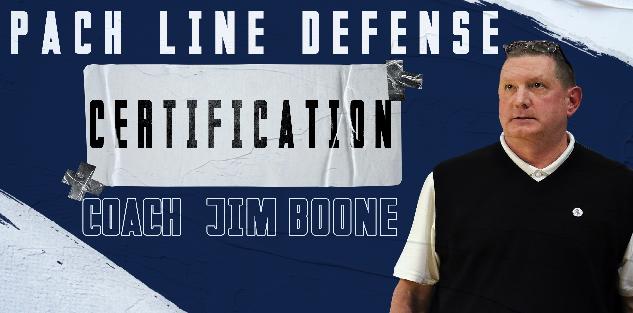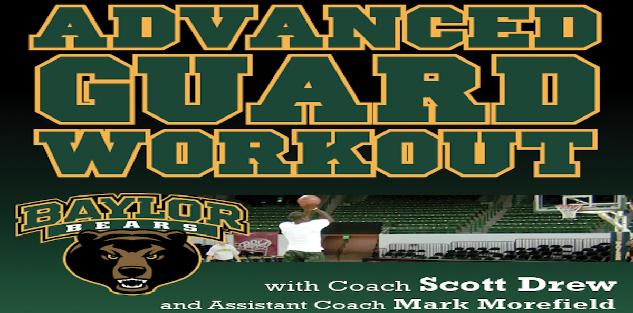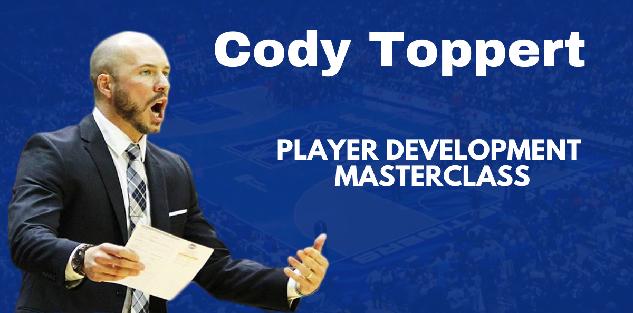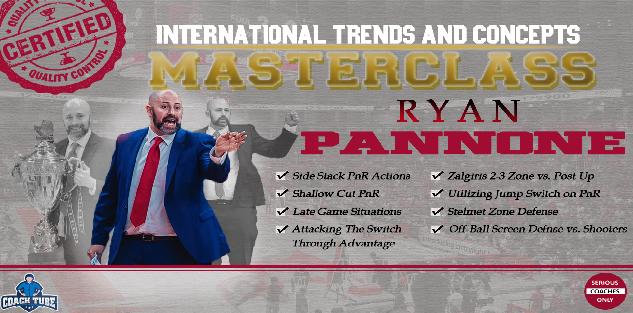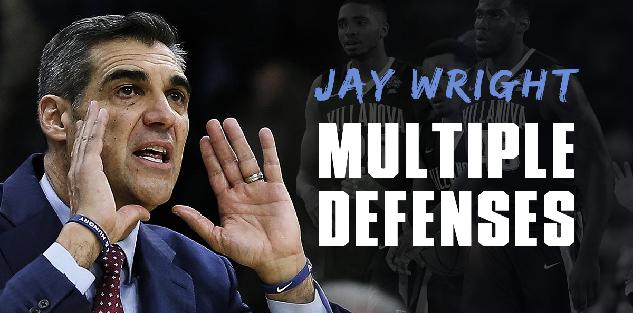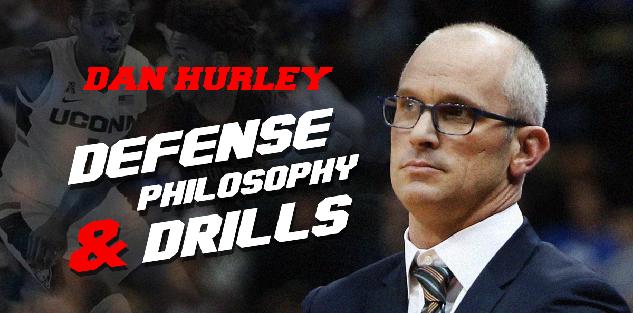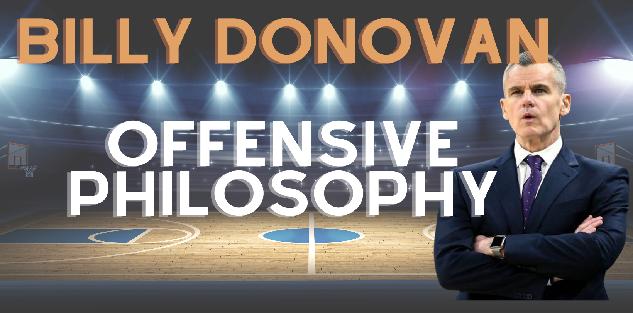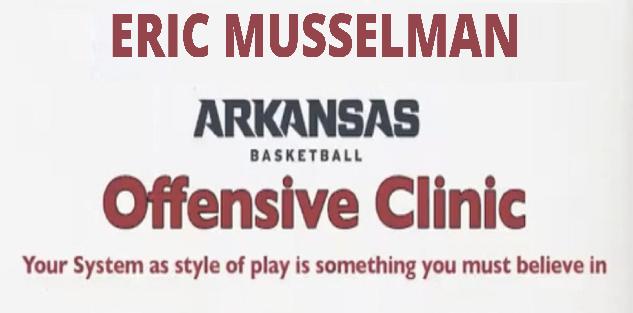Featured courses
- Two Great Game Situational Workouts For the Basketball Offseason by Grant Young
- Two Reads Basketball Players Must Understand Before Executing the Ball-Screen by Grant Young
- Two of LSU Coach Kim Mulkey’s Game-Winning Inbounds Plays by Grant Young
- Three Effective Early-Season Defensive Basketball Drills by Grant Young
- Four Essential Tips For Basketball’s 1-3-1 Zone Defense by Grant Young
- Four Zone Defense Drills to Strengthen Your Team by Grant Young
- How to Beat the Three Most Common Pick and Roll Coverages by Grant Young
- Two Drills to Improve Shooting at the Start of the Basketball Season by Grant Young
- Core Basketball Principles That Dallas Mavericks Coach Sean Sweeney Teaches by Grant Young
- Three Competitive Shooting Drills For Your Basketball Team by Grant Young
- How To Teach The ‘I’ Generation of Basketball Players by Grant Young
- Three Elite Drills to Begin a Basketball Practice With by Grant Young
- How to Build a Championship-Winning Basketball Team Culture by Grant Young
- Two of Texas Women’s Basketball Coach Vic Schaefer’s Tips For Team Culture by Grant Young
- Atlanta Dream WNBA Coach Brandi Poole’s Four Sets for Secondary Offense by Grant Young
- NC State Basketball Coach Brett Nelson’s 4 Crucial Point Guard Qualities by Grant Young
- Kentucky Coach Mark Pope’s Five Guard Rules For Offense by Grant Young
- McNeese State Basketball Coach Will Wade’s 4 Core Pillars by Grant Young
- 4 Tips To Instantly Improve Your Free Throw Shooting by Tyler Linderman
- Assemble a Championship-Caliber Basketball Rotation by Brandon Ogle
- Two of UConn Coach Dan Hurley’s Key Defensive Drills by Grant Young
- Four Post Moves All Basketball Forwards Should Have In Their Bag by Grant Young
- Four of Baylor Coach Nicki Collen’s Midseason Pick and Roll Adjustments by Grant Young
- WNBA Legend Sue Bird’s Two Tips For Attacking on Offense by Grant Young
- Houston Coach Kelvin Sampson’s Three Keys for Building a Basketball Program by Grant Young
- Two of Tom Izzo’s Top Michigan State Defensive Drills by Grant Young
- Four of Olympic Gold Medalist Coach Mechelle Freeman’s Relay Race Strategies by Grant Young
- Three Key Strategies Will Wade Uses to Build a Dominant Team by William Markey
- Five UConn Huskies Men’s Basketball Plays That You Can Use by Grant Young
- Three Tips for Maintaining Team Culture at the End of a Basketball Season by Grant Young
- Three Dribble Drive Motion Drills to Teach Your Basketball Team by Grant Young
- Three Dribbling Drills For Non-Primary Ball Handlers by Grant Young
- Four Advanced Ball Handling Drills For Basketball Guards by Grant Young
- Three Tips to Sharpen Your Post Player’s Footwork in Basketball by Grant Young
- These Three Pick and Roll Drills Are Crucial For Any Ball Screen Offense by Grant Young
- Three Closeout Drills to Improve Basketball Shooting Defense by Grant Young
- Three Tips to Perfect the Packline Defense in Basketball by Grant Young
- Four Keys to Executing the Read and React Offense in Basketball by Grant Young
- Three Tips to Develop Elite Basketball Shooters by Grant Young
- Three Crucial Keys to Executing the 5 Out Offense in Basketball by Grant Young
- These Three Offensive Sets Will Help You Beat Any Zone Defense by Grant Young
- Three Transition Basketball Drills To Play With More Pace by Grant Young
- Three 5 Out Offense Drills Any Basketball Coach Can Use by Grant Young
- Four Vital Techniques for a Motion Offense in Basketball by Grant Young
- Three Baseline Inbounds Plays To Win Your Basketball Team Games by Grant Young
- Four Drills For Sharpening the European Ball Screen Offense by Grant Young
- Three Positioning Tricks For a Basketball Zone Offense by Grant Young
- Three Rules to Perfecting Basketball's Lock Left Defensive System by Grant Young
- UCLA WBB Coach Cori Close’s Two Keys to Winning the Mental Game by Grant Young
- Four of Alabama Coach Nate Oats’ Favorite Basketball Drills by Grant Young
- Three Ways To Turn Transition Offense in Basketball Into Points by Grant Young
- Three Drills to Master Basketball's Pack Line Defense by Grant Young
- Three Transition Defense Drills to Halt Fast Breaks by Grant Young
- Four Offensive Rebounding Drills to Win Second Possessions by Grant Young
- 4 Defensive Technique Drills from Boston Celtics Assistant Coach Brandon Bailey by Marek Hulva
- 5 Drills to Improve Ball Handling by Tyler Linderman
- 13 FUNNY BASKETBALL GIFS by Alex
- BASKETBALL SPEED AND AGILITY: 8 QUESTIONS FOR COACHTUBE EXPERT RICH STONER by Jaycob Ammerman
- Defensive Strategies for Basketball by Ryan Brennan
- 4 Keys To Turning Your Program Into Championship Contender By Dallas Mavericks Coach Sean Sweeney by Marek Hulva
- 5 Components to Creating a Winning Basketball Program by Justin Tran
- Guide to Becoming a Lethal Scorer in Basketball by Justin Tran
- Zone Defense In the NBA Eastern Conference Finals by James Locke
- Mastering Court Mobility: Tips for Effective Movement in Basketball by Justin Tran
- 5 Basketball Shooting Drills: How to Develop a Sharpshooter by James Locke
- 6 Points of Emphasis for a Successful 5 Out Offense by Jaycob Ammerman
- Effective and Efficient Methods to Practice During the Basketball Season by Justin Tran
- Three Great Passing Drills From a Basketball Coaching Legend by Grant Young
- 7 Principles For Perfecting the Princeton Offense in Basketball by Grant Young
- How to Replicate A Modern NBA Offense by Grant Young
- Three Great Two-Ball Dribbling Drills For Basketball Development by Grant Young
- Two Rebounding Drills to Win Your Basketball Team Championships by Grant Young
- How to Improve Your Basketball Team’s Defense With the Shell Drill by Grant Young
- How Baylor Basketball’s Scott Drew Develops Elite Guard Play by Grant Young
- Off-Ball Movement Tips and Strategies: Lessons From the NBA Finals by James Locke
- Player Development: Scott Drew’s Tips for Producing NBA Guards by James Locke
- How to Execute a Spread Offense in Basketball by Grant Young
- Four Quality Quotes From Four Final Four Coaches by Grant Young
- A Guide to the Pack Line Defense by Alex Martinez
- 3 Defensive Build Up Drills to Improve Team Basketball Defense by Grant Young
- Battle of Two Great Coaches: Best Plays from the NBA Finals Contenders by Justin Tran
- 10 Creative Ways Athletic Programs Can Use a Video Board to Raise Money by Coach Williams
- How to Use 3 on 3 to Improve Your Basketball Team by Grant Young
- How to Defend the Pick and Roll by Grant Young
- Mastering Basketball Defense: Techniques, Drills, and Strategies for Success by Justin Tran
- Three Tips From The Coach Who Developed Giannis Antetokoumnpo by Grant Young
- 2023 NBA Draft: Skills and Technique from Top Prospects by Justin Tran
- From College to the Pros: Transitioning the Dribble Drive Offense by Justin Tran
- Positionless Basketball: Redefining Roles on the Court by Justin Tran
- Revolutionize Your Offense: Proven Concepts to Elevate Your Basketball Game by Justin Tran
- 5 Essential Fastbreak Drills Every Basketball Coach Should Know by James Locke
- How to Run a Circle Offense in Basketball by Grant Young
- Game-Changing Strategies: ATO Plays in the EuroLeague and Olympics by Justin Tran
- How to Stand Out at Basketball Tryouts by Grant Young
- How to Improve Your Basketball Team’s Transition Defense by Grant Young
- Indiana Fever GM Lin Dunn’s Two Keys For Women’s Basketball Coaches by Grant Young
- Strength Training Strategies Every Basketball Player Should Have by Grant Young
- A WNBA Basketball Coach’s Four Priorities In Transition Defense by Grant Young
- Three Adjustments to Make When Your Basketball Offense Isn’t Working by Grant Young
- Three Pillars to Applying Defensive Pressure on the Basketball Court by Grant Young
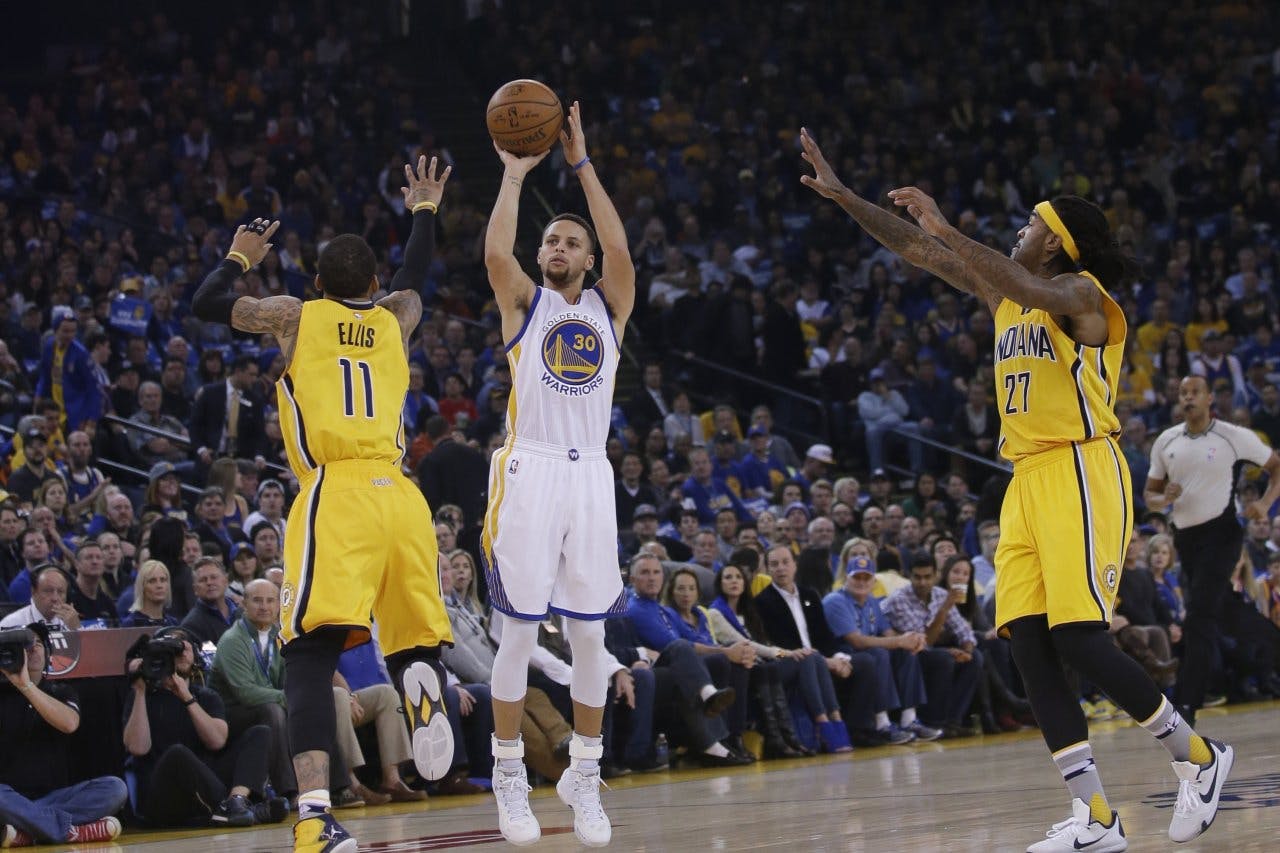
Three Tips to Develop Elite Basketball Shooters
- By Grant Young
Good shooting is crucial in basketball because of how it directly contributes to a team's ability to score points. A player with strong shooting skills can consistently put the ball in the basket, adding valuable points to their team's total score.
Additionally, good shooting can force the opposing team to adjust their defensive strategy. If a player is known for their accurate shooting, defenders are forced to guard them closely, creating opportunities for their teammates to drive to the basket or find open shots.
There’s also the fact that having good basketball shooting team drills instills confidence in both the shooter and their teammates. When a player consistently makes their shots, it boosts the team's morale and can demoralize the opposing team. All of these reasons convey why good shooting is a fundamental aspect of basketball that can greatly impact a team's success on the court.
Despite its obvious necessity, teaching shooting in basketball can be challenging because many players try to emulate the shooting style of NBA superstars like Steph Curry.
While Curry is undoubtedly an exceptional shooter, his unorthodox shooting form and long-range accuracy have led to a trend of young players attempting to mimic his technique. The challenge arises from the fact that just about nobody aside from Curry himself has the natural ability to shoot the way he does. Additionally, focusing solely on imitating Curry's style can lead to a lack of emphasis on the core principles of shooting, such as footwork, balance, and shooting fundamentals.
This is why it’s essential to teach players that while they can admire Curry's shooting prowess, they should focus on mastering the foundational aspects of shooting that apply to all players, regardless of their style. And Dave Severns has a few tried and true tips to start instilling in your basketball team’s shooters.
Coach Severns is currently a basketball scout for the Indiana Pacers. Before that, he spent 14 years in the NBA as Director of Player Development for the LA Clippers from 2010-2016, Director of Player Development for the Chicago Bulls from 2008-2010, and Pro Personnel Scout for the LA Clippers from 2016-2021.
His ‘Elite Shooting’ course dials in on each body part and its role in executing the shot, and will have your team setting up, executing, and making more high-percentage shots with ease.
Shooting Fundamentals - Shooting Foot/Legs
A successful shot starts from the ground up. And especially for youth players (anyone under 10 years old), they must get their leg and foot mechanics down when shooting so that they don’t develop bad habits as they get older.
Coach Severns explains that right-handed shooters must ensure that their shooting foot (which is their right foot) is slightly forward than their left foot when shooting, as opposed to them being parallel. This frees up the shooting shoulder and allows for a nice, clean follow-through. And it doesn’t have to be a significant amount forward. Just an inch or so should suffice.
The legs and the rear are the biggest muscles in the lower body, and that’s what must be used during the shot. This is why having a ready stance that’s almost like a coil with the lower body is of the utmost importance.
A good drill to practice this with is placing a ball on the ground, walking up to it, then squatting down to pick it up (while remaining in an athletic squat) and shooting it in the same motion. Because squatting down the pick the ball up will activate your legs, this will force those same leg muscles to be used during the shot.
Shooting Fundamentals - Target/Eyes
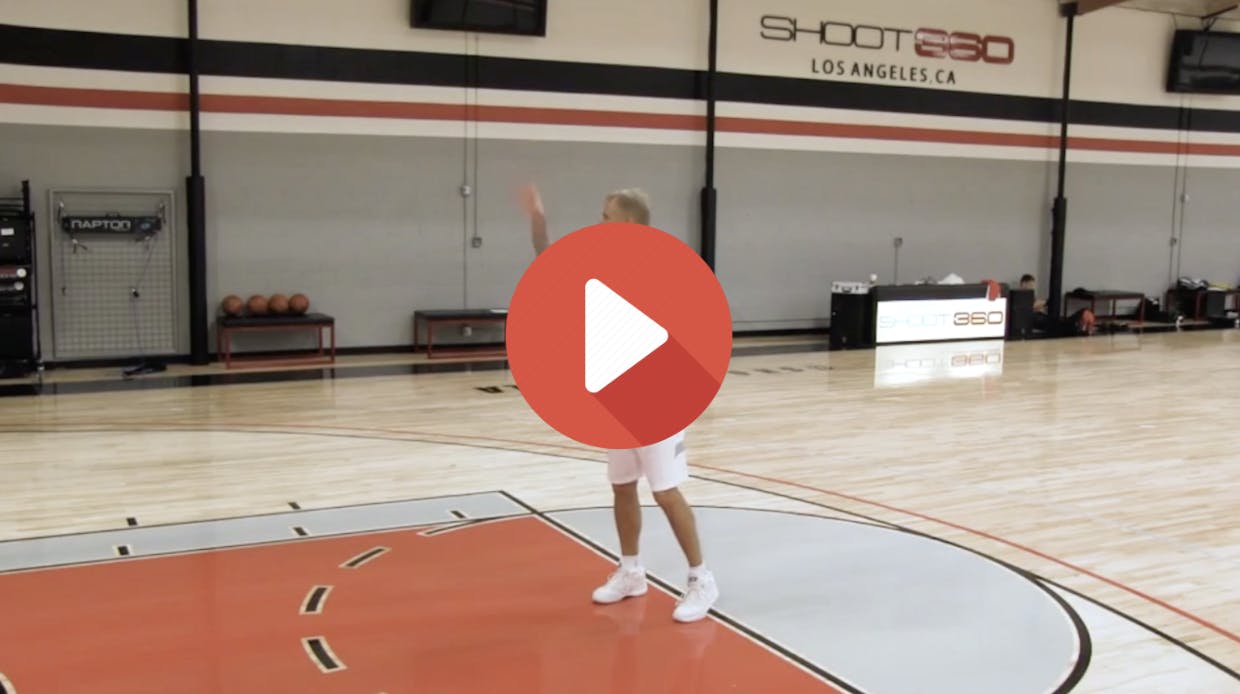
Knowing where to target your shot is not always as simple as it may seem. Coach Severns suggests that there are two types of shooters: those who look at the rim when they’re shooting and those who follow the ball with their eyes.
Coach Severns has seen great shooters employ both techniques, and neither is inherently better than the other. For this reason, he advises to not try and change a shooter’s natural tendency to do either.
But what’s important is that target they’re shooting at. Of course, this is the hoop, but there’s more nuance to it than that.
Coach Severns said that 70% of missed shots are because the ball is shot too short. Therefore, it would make sense to use the back of the rim as the target. When teaching this to kids, a good phrase to use is, “Lift the ball to the back rim” because this implies applying arc to the shot, which is also a valuable habit to use when shooting.
He then goes on to note how many coaches tell their players, “Don’t miss short.” Yet, because short is the last word used, that’s what will stick in the player’s head, which may prompt them to miss short.
Catch & Shoot - Circle J’s
A great team shooting drill that Coach Severns suggests is what he calls the “Circle J’s” drill.
This drill starts with a group of 4-6 players in a line along the baseline with a chair positioned about 3-5 feet outside the three-point arc on the wing. The first player runs out to that chair, circles around it, and then catches a pass from the next player in line either behind the three-point or somewhere in front of it, depending on where they’re a threat to shoot from.
As soon as the next person in line makes the pass they will do the same thing, then receive their pass from the next person in line.
When watching their players do this drill, a coach will want to ensure they’re stepping with their back foot first, so that if the shot isn’t there then they can pivot without traveling.

